Your cart is currently empty!

Starting A Forest Group for Kids
Have you ever wished you had a local community of parents and kids that regularly met up to play together outside? Have you ever considered starting a playgroup, where the kids could socialize together while they run through the woods, hiked, and explored? Are you interested in meeting other like-minded parents that enjoy spending time outdoors? Well, this post is for you! Today, SarahRuth, Georgia mom of three and outdoor educator, shares everything you need for starting a forest group for kids. (Your outdoor playgroup doesn’t have to be in the forest – it can be anywhere.) She helps you come up with your vision for your forest group, a routine for your meetings and advice for how to get the word out. This is a post you’re not going to want to miss!
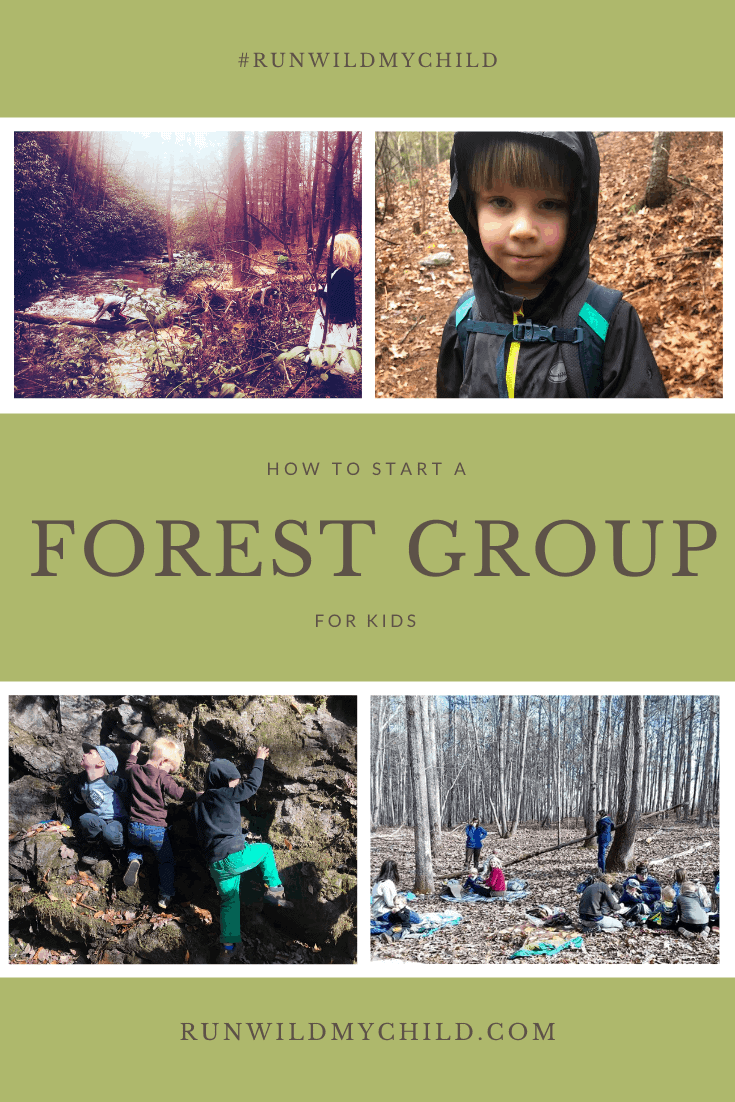
The idea to start a forest group
Hello, there outdoor mama! So, you’ve found your stride and you are wracking up your hours outside. You already know that time outdoors is important for your children and their development. You know how wonderful you feel after spending time outside. Your children love your forest forays and outdoor adventures together. Yet, something is missing. After several frolics under the green canopy, you realize what it is…community.
We, humans, are social creatures and when you love something (like spending time outside), it’s natural to want to share it with others. Getting outside is now a priority, so why not share the forest with a group of like-minded folks? Starting a forest playgroup for kids may have never been on your radar. Maybe it’s something you never considered or ever planned to do. And yet, it’s exactly what you know you’d love to do and you are ready to embark on this new adventure. I’m here to tell you how to do it and why it’s such a wonderful idea.

The vision for your forest group
Starting a forest group for kids can be a huge undertaking. In order to ensure the best chances of success, let’s pull together a game plan. The first step in the process of starting a forest group is to come up with a vision for your group and think about what you want it to look and feel like. Here are some questions to consider right away:
- How old are your children?
- Do you intend to keep the group within a similar age range or open it up to all ages?
- How many kids?
- Where you will meet? Is there a place you have been visiting in the woods?
- Does it have any major risk factors for children?
- How you will communicate with others?
- Will social media play a role? (Many large forest groups use groups on social media to advertise locations, times, and dates of meet-ups. Smaller groups are most comfortable using a more personal method like texting.)
- What are the leadership roles for the adults?
- Will there be lessons or just open play?
- What about food and snacks? Supplies and gear?
- Do you want to put together a set of rules or general group guidelines?
Bringing on additional support
As you write down the answers to these questions, keep your vision in mind, and plan accordingly. When starting a forest group for kids, nothing is set in stone. You can always make changes later and adapt to the circumstances that arise. The planning part should be fun, so don’t let all the questions overwhelm you into not taking any action. It also helps to get help. Instead of pioneering a group individually, I have found having a co-director is wise and keeps me motivated and accountable. Teaming up with another like-minded adult means you will have double the ideas, as well as a fill-in when you are sick, or cannot be as engaged in the group.
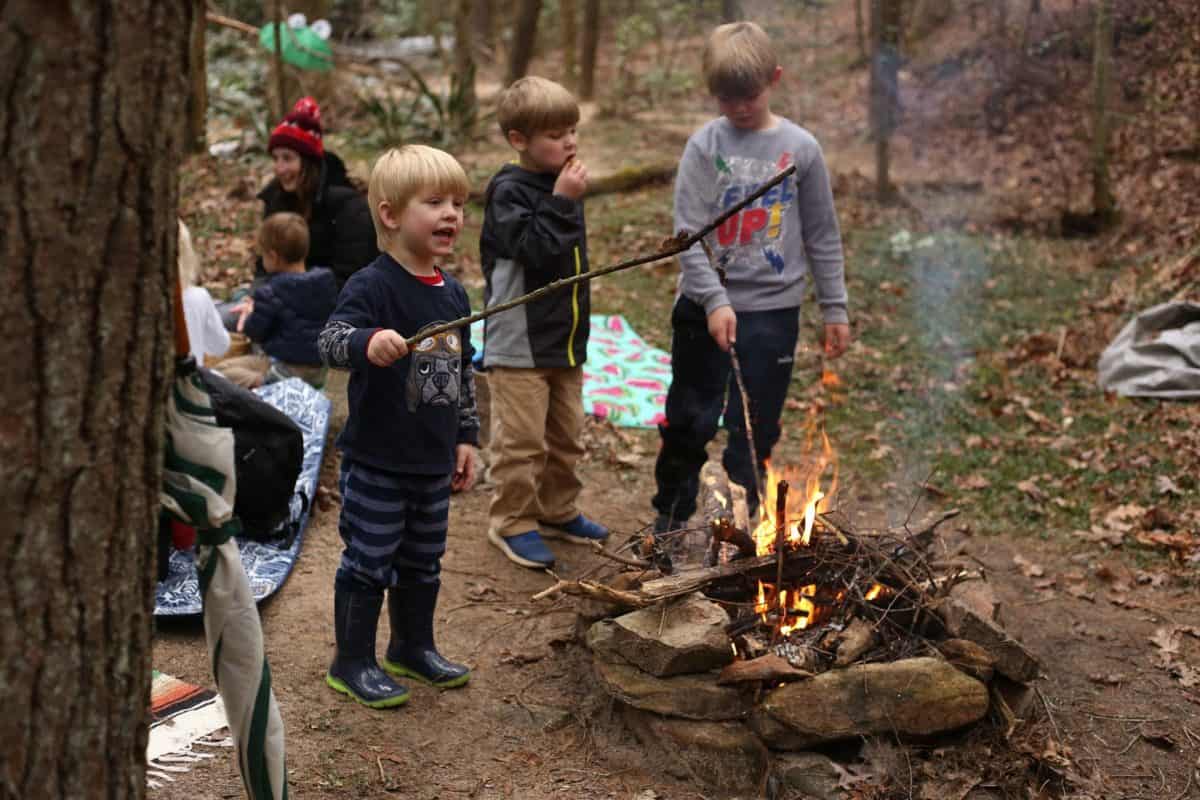
Finding a base camp for your forest group
One of the primary roles of the person facilitating a forest group for kids is locating a place for the kids to meet and learn together. Groups usually take on one of two characteristics in this regard. They either choose a specific location and have their meetings there every time or they choose a new location and explore a different place at each meet-up. Both models have their benefits! Keep in mind the skill level, hiking ability, and ages of the participating children. This will help guide decisions about where to meet at events.
Stationary base camp
“Follow me!” 7-year-old Nellie shouts as she races forward on the trail.
“Wow! She is confident,” remarks a new forest group parent as they observe several children run behind Nellie and down the trail.
One idea is that remaining at the same base camp from week-to-week for months (or even years) creates a known environment. Children become comfortable, and eventually even experts in their space. They know the trails leading in, and around their base camp. Choosing the same base camp for an extended period of time can be beneficial for observing seasonal changes.
Nellie is an example of a child who is reaping the benefits of returning to the same space over and again. Her leadership skills are flourishing, and other children easily fall in step with her as a guide.
Roving location base camp
“Today we plan to use our map skills and cardinal direction knowledge to find our base camp,” instructs an adult as several children flock around them with interested faces. After a brief trail talk, the adult passes out compasses and asks the children to use a simple forestry map to head to their base camp for the day.
The other option is to decide to host your outdoor playgroup in a new location each time you meet. The above example shows how a base camp might be different at each event and how that might benefit children. Children practice using learned skills, they develop teamwork and learn how to explore new places, and adapt well to change. They figure out how to find a great base camp location at each meeting and learn how to safely explore unknown locations.
Hybrid
Some forest groups will choose to have both a stationary base camp, as well as events at new locations with spontaneous destination-based hikes and adventures.
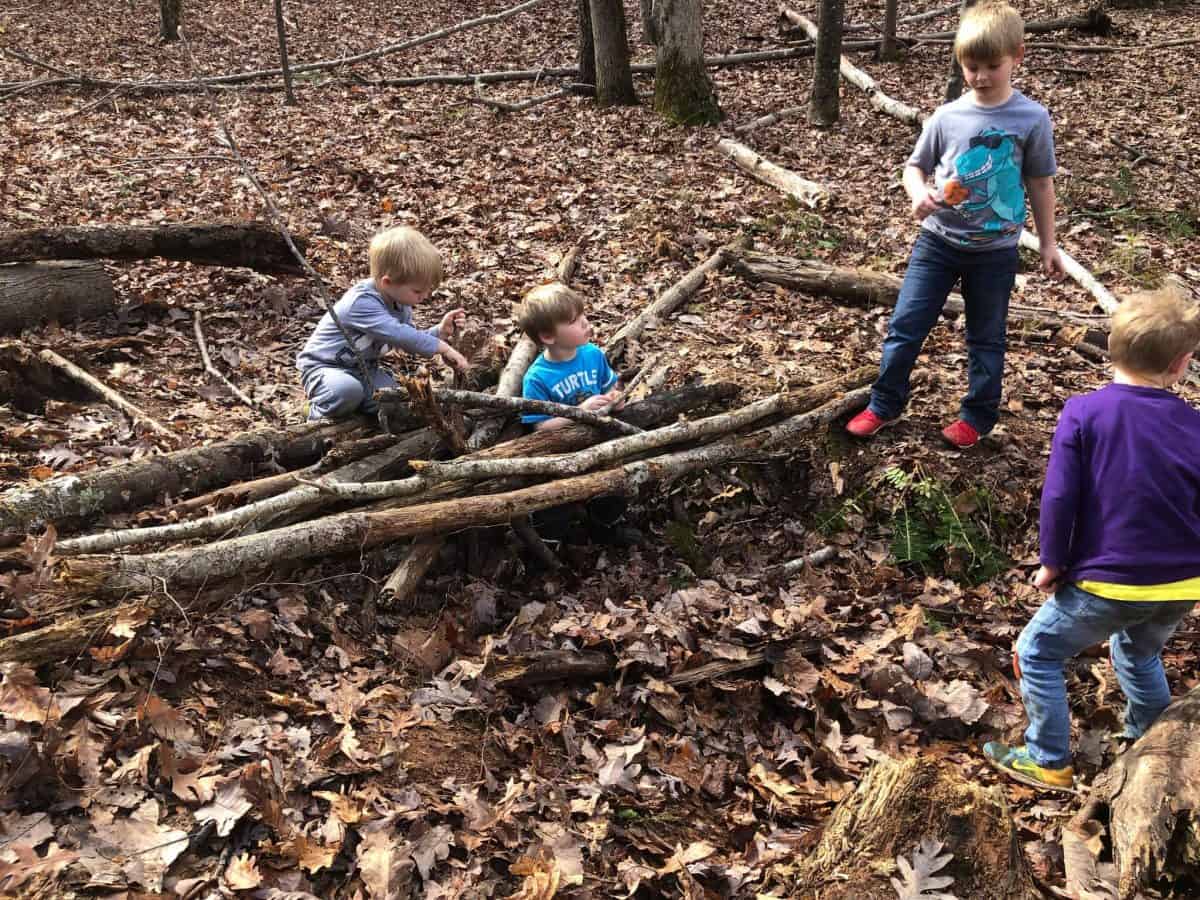
Setting the structure of your forest group
When starting a forest group for kids, the next step after finding your base camp is to identify goals and structure for meetings. There is a school of thought that says children in the woods should be their own kingdom. Not infringed upon by the plans and ire of adults. Instead, they can create a world of their own, where they are the kings and queens and rule the land. Adults, step aside! You are the moat around their kingdom. Position yourselves as a border around the chosen base camp, spread your blankets, chat with a friend. You are a gatekeeper only.
There are many perks to having an “unstructured” forest playgroup that gives kids lots of time for free play. The many benefits of unstructured free play in nature have been documented in research again and again. Kids need time like this to be kids without adult interference. Plus, it’s easier for the adults, as there’s no need to plan activities or bring supplies. Watch, be aware, and relax while your children build friendships and explore.
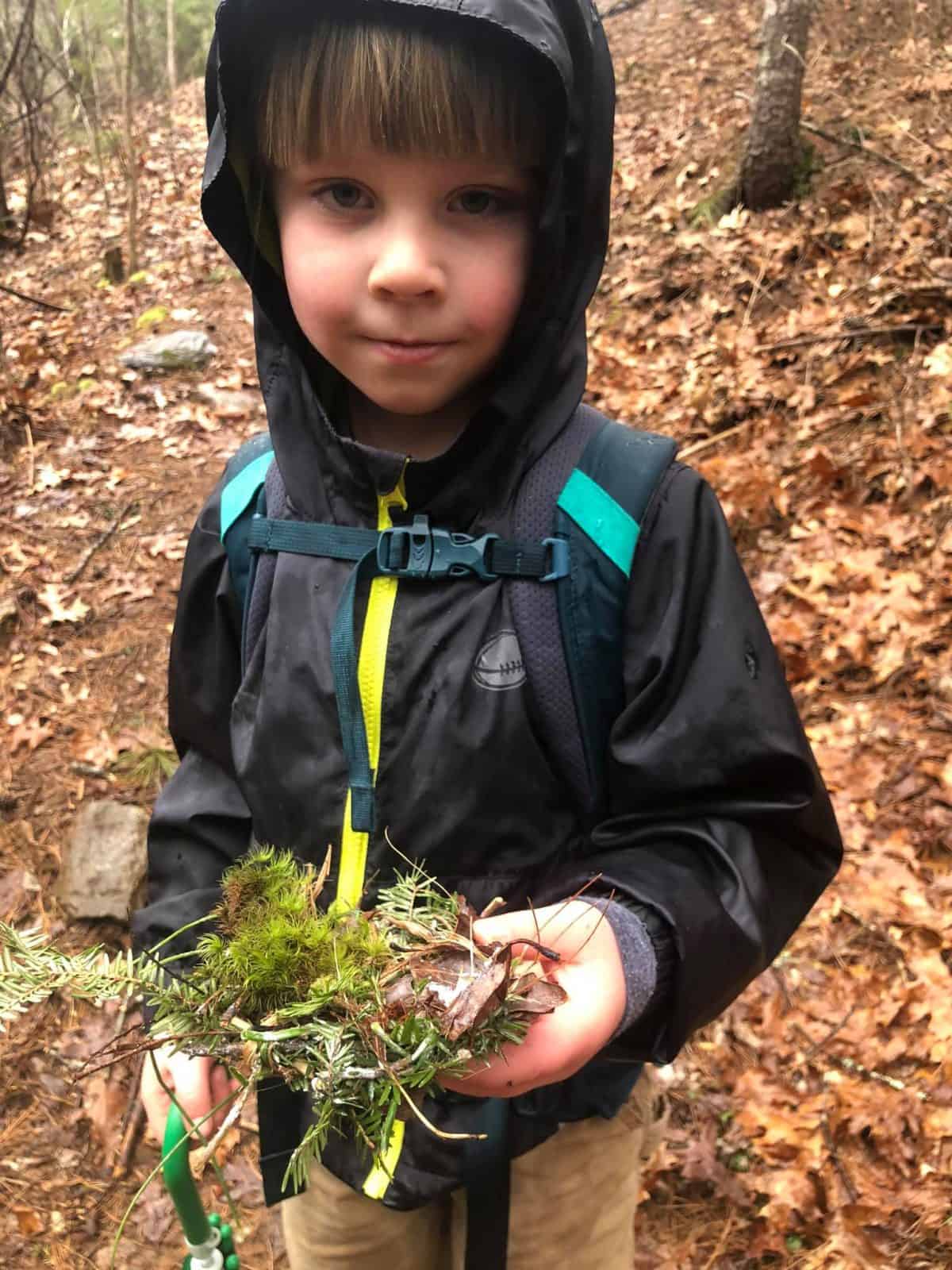
At some point, or in some groups, a group lesson is important. This can either be an educational lesson, a skills lesson, or even just reading a book to the kids. This “forest school” approach is a great way to incorporate lessons and educational activities into an outdoor setting where kids learn best. Teaching outdoor skills using great books can be useful as well as essential to raising future environmentalists and earth tenders. Moreover, foraging, Leave No Trace, map skills, fort building, nature observation, and more are lessons that are best taught in the forest.
Some groups will have multiple events every week and can host both uninhibited play meetups as well as more structured “forest school” types of lessons. You can definitely do both and adapt as your kids get older and express interest in certain things.

Bring your friends to your forest group for kids
Storytime at the library will forever go down in history as the place I left my pride. Storytime was over, but a sweet little baby riding in her mom’s carrier kept grinning at me as I walked around the room re-shelving the books my two tyrants had strewn about. I wanted badly to approach and greet the mom, but just couldn’t get up the nerve. She left.
Suddenly, I find myself in the parking lot beside this mom, baby, and toddler. Breathless, I try and explain why I followed her to her van, “Hi! I know this is strange, but your baby is beautiful and friendly and, well, I didn’t know if you would maybe like to meet with some other moms at my place sometime? I am trying to get some folks together….”.
Call me crazy, but that was exactly how my first ever moms group started. Later, this mom became my best friend. I learned she had battled postpartum depression and she shared, “I had been waiting for someone to ask me over!”
Another dear friendship was born from a chance online encounter in a large mom’s group on Facebook. We realized we were in the same area. We agreed to meet up. The rest is history in the woods because she ran forest groups with me for three years thereafter.
Here’s the deal: making new mom friends can be hard. Sometimes you just have to get out of your comfort zone. The woods are a level playing field. Invite the mom struggling to get through the grocery store with three littles in tow to your forest group. Post an invitation at the library so other nature-loving moms can find it. Drop off an invite at the local food bank. Mention your forest group each time you hang out with friends. Growing a group takes some courage, but it’s so worth it. The friendships that develop (both at the mom and kid-level) are just incredible. Starting a forest group for kids was one of the best things I could do for myself as a mom.
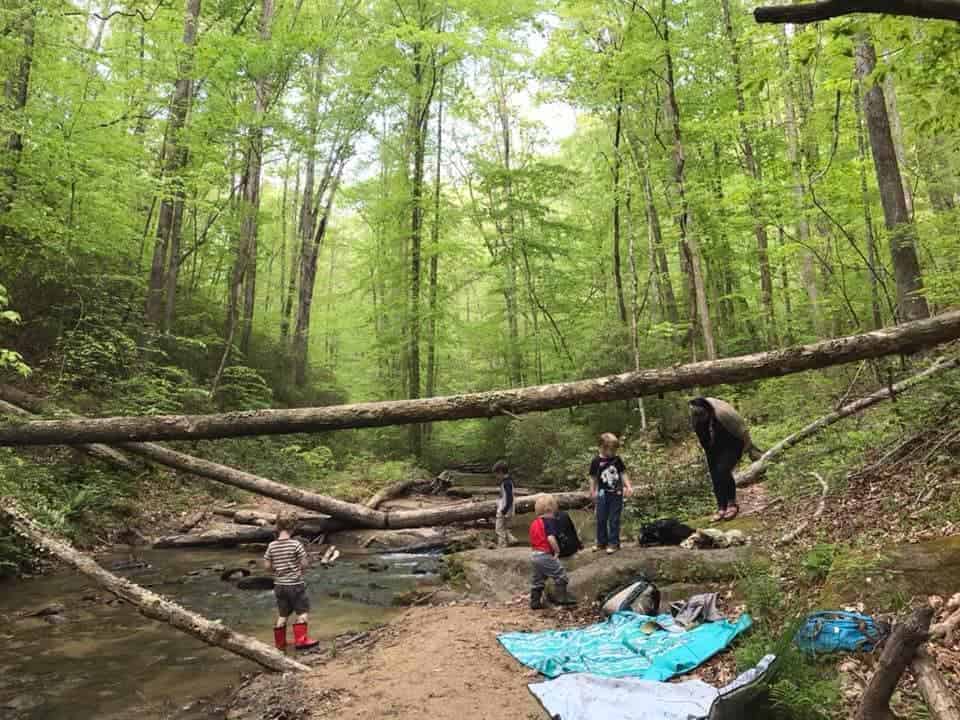
Finding your stride in your forest group events for kids
A glimpse into a forest playgroup meeting:
About 15 children and 6 adults encircle a forest sign marking a trail. One adult can be heard over the rest, briefly instructing the adults to silence phones and keep them put up. One caregiver agrees to be the “photographer” for the day. Then a cheerful song begins. Some children sing and clap while others listen. Brief guidelines are provided with the children listing them almost independently.
- Be within sight of adults.
- Leaves of three, leave them be.
- Gentle hands (with each other and nature).
- Sticks pointed down.
- Rocks are thrown away from others.
- Pack in, pack out.
And then they’re off to play!
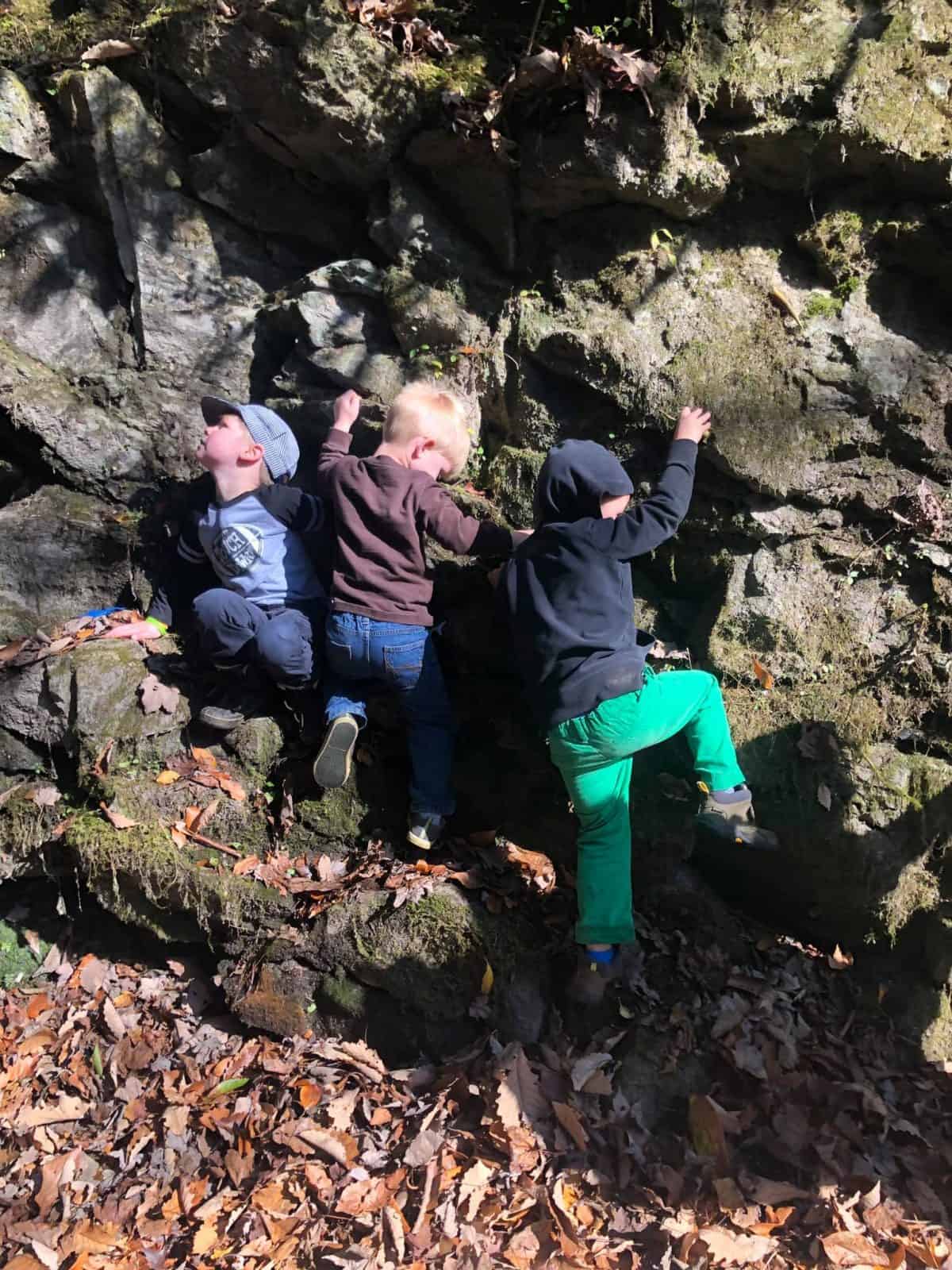
That is the forest group way! Simple guidelines shared and then off for a grand adventure. Many groups like to have a rhythm, an expected sequence of events, not necessarily tied to any specific times. In groups I have led, we typically have a trail talk (like above), a hike in (about 15-20 minutes), time at base camp (an hour or so), shared snack, and storytime (15-20 minutes). After that, families can choose to continue to play, or leave. Having a general idea of the flow of events can help children and caregivers feel comfortable. It can also help others step into leadership roles when a director cannot be present.

What you need to know before starting a forest group
Unless you are a forest guru (and maybe you are!), chances are you won’t know tons about the forest and the surrounding area when you get started. Hence, I have become good at everything and an expert at nothing. In starting a forest group for kids, I have realized that I get to learn as I go. Right along with the kids! You don’t need to know everything to start a forest playgroup. That’s the best part!
However, if you like doing your research on projects before jumping right in, here are some suggested books for finding ideas, gaining knowledge, and just overall improving your insight on running a forest group for kids.
- Play the Forest School Way: Woodland Games, Crafts, and Skills for Adventurous Kids
- There is No Such Thing as Bad Weather
- The Lost Art of Reading Nature’s Signs
- Foraging with Kids: 52 Wild and Free Edibles to Enjoy With Your Children
- Forest School Adventure: Outdoor Skills and Play for Children
If you are looking for great books to read while at your forest group events, this post is filled with amazing ideas. Including culturally diverse books is important as well.
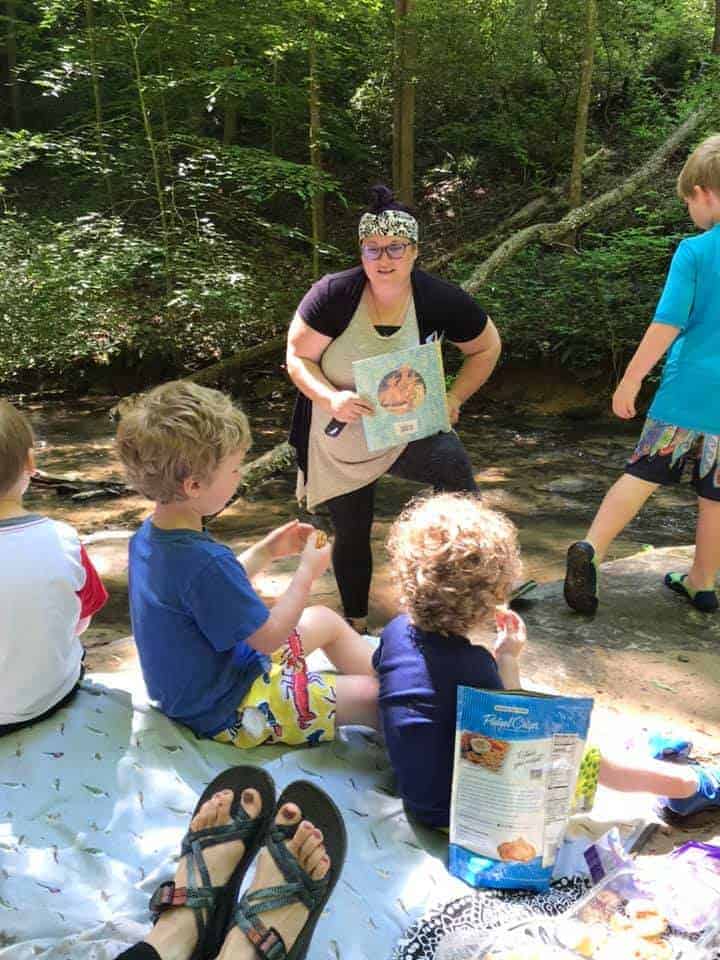
The forest is calling
Be encouraged! So many people have started a forest group for kids before you. Many will after. This is YOUR moment, though. A group for YOUR kids. A place where you get to prioritize outdoor time and give your kids an incredible experience that will change their lives. (and maybe even yours) Work out the plan, find your courage, and then walk outside with your crew and invite your community to join in! You cannot fail, because starting is success in and of itself!
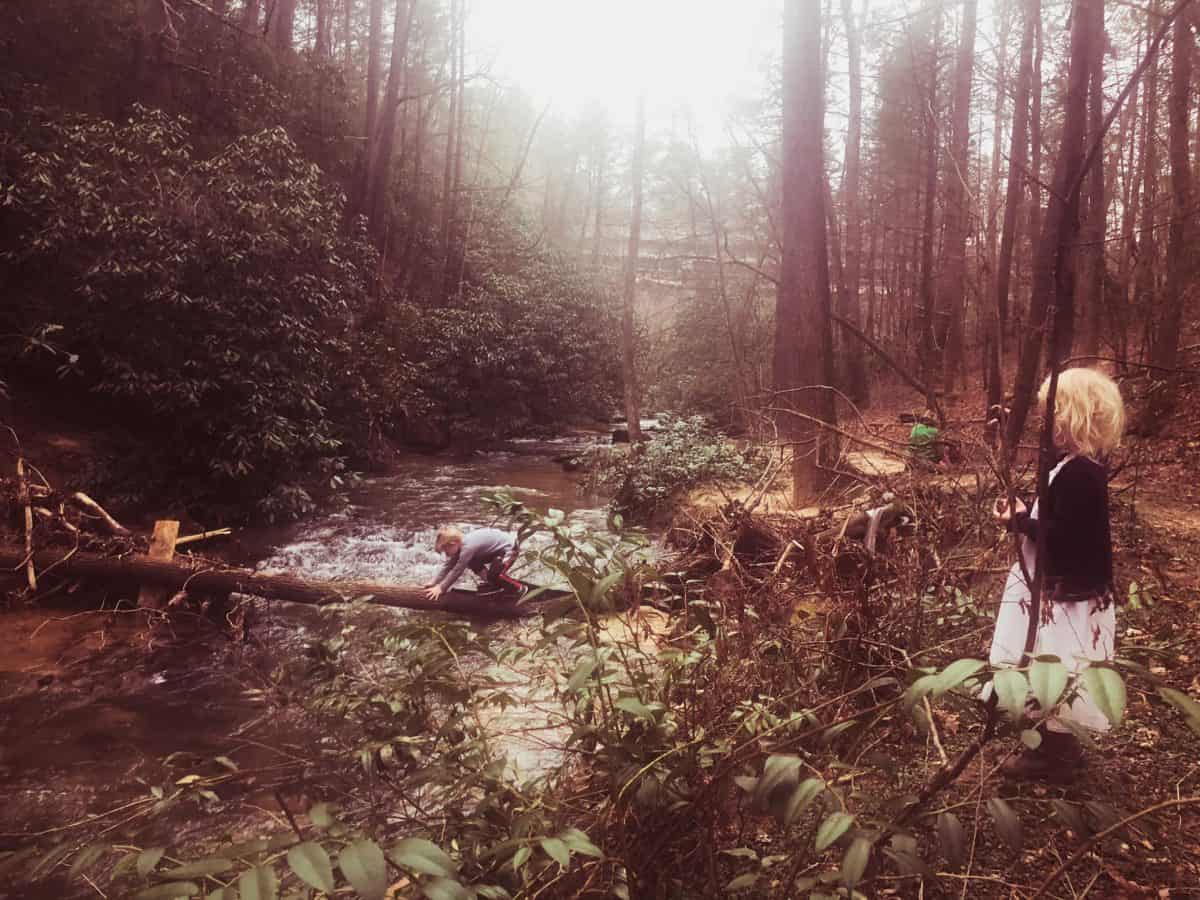
So now we need to know…
When are we meeting you in the woods?
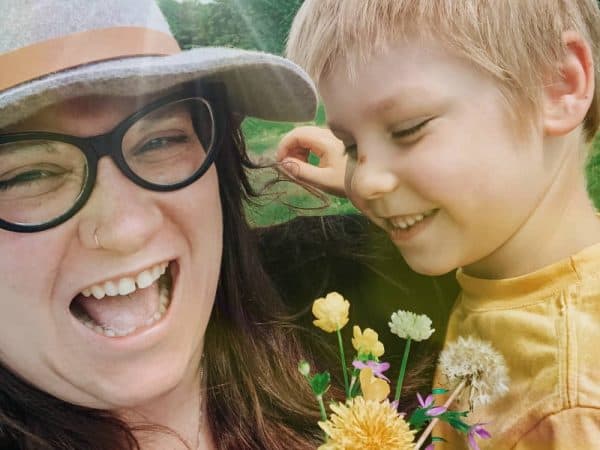
About the author
SarahRuth is a homeschooling mother of three boys. She was raised in cities across the East coast, but now resides in the Appalachian Mountains of Georgia where her husband grew up. Passionate about inspiring others to shift from the status quo of Western indoor life, she launched a local Free Forest School chapter in 2017. Her family clocked over 2k hours outdoors in 2019 and believes that outside time as a family is vital to a joy-filled life. She collects books, stray children, and as much coffee as her body will permit. When not foraging, chasing waterfalls, or camping with her crew, you can find SarahRuth crossing the globe from her laptop, teaching English full time online! She has two bachelor’s degrees in Education and is passionate about teaching children to love learning through outdoor adventures.
You can find more from SarahRuth in the following online locations:
Instagram: @kindle_togetherness
RWMC posts: SarahRuth
Comments
3 responses to “Starting A Forest Group for Kids”
Great I would love to do just what you suggested here
Kudos to youVery helpful and well written. Just what I needed To feel like I can do it!
This is extremely good idea to help kids in my country. I would love to keep in touch with you often to help with more insights on this. I love spending time with chdden and this will go along way

Leave a Reply